
- Index
- Brand
- Rating
- Region Code
- Release Year
- Type
- Action Figure (106)
- Character Figure (12)
- Cigarette Lighters (18)
- Doll (21)
- Doll Playset (35)
- Eau De Parfum (60)
- Eau De Toilette (49)
- Fashion Doll (20)
- Figure (19)
- Figurine (18)
- Jacket (24)
- Perfume (22)
- Plush Bear (16)
- Poster (24)
- Race Car (13)
- Soft Toys (23)
- Sunglasses (15)
- T-shirt (23)
- Trainer (120)
- Wristwatch (38)
- Other (2454)
- Unit Type
Extremely rare fossil Bulbil attached to Lepidodendron twig! Not a cone! Read
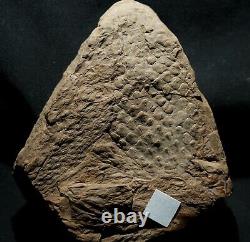


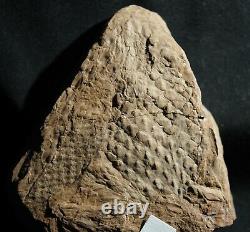

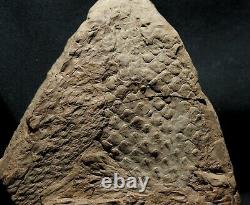
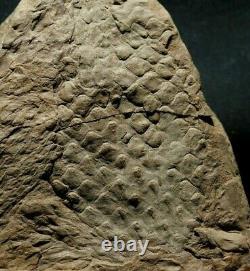
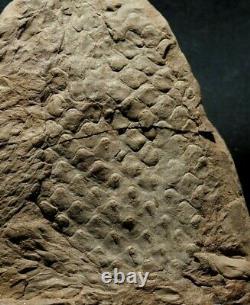
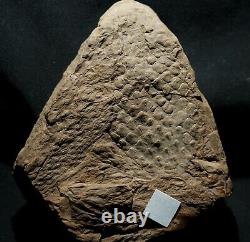


My specimens are genuine and will be delivered with a Certificate of authenticity, age and origin and scientific works copy described this species! I will send You a combine invoice. Structure attached to a Lepidodendron branch. It's probably a kind of Bulbil! Specimen was secured with glue at the break point. All detailed and accurate data will be provided with the specimen. Lower Carboniferous, Mississipian - Serpukhovian - Namurian A. 7,5 x 5,0 x 0,5 cm (scale-bar white square on pictures is 1,0 x 1,0 cm).
Structure attached to a Lepidodendron sp. It's probably a kind of Bulbil. When the bulbil fell off, a new plant could grow from it.
(also known as the "Scale tree") is an extinct genus of primitive, vascular, arborescent (tree-like) plant related to the Lycopsids (club mosses). It was part of the coal forest flora. They sometimes reached heights of over 30 metres (100 ft), and the trunks were often over 1 m (3.3 ft) in diameter, and thrived during the Carboniferous period. Sometimes called "giant club mosses", this is actually not correct as they are actually closer to quillworts than to club mosses.
The closely packed diamond-shaped leaf scars left on the trunk and stems as the plant grew provide some of the most interesting and common fossils in Carboniferous shales and accompanying coal deposits. These fossils look much like tire tracks or alligator skin. The scars, or leaf cushions, were composed of green photosynthetic tissue, evidenced by the cuticle covering and being dotted with stomata, microscopic pores through which carbon dioxide from the air diffuses into plants.Likewise, the trunks of Lepidodendron would have been green, unlike modern trees which have scaly, non-photosynthetic brown or gray bark. Has been likened to a giant herb. The trunks produced very little, if any, wood. Most structural support came from a thick, bark-like region.
This region remained around the trunk as a rigid layer that did not flake off like that of most modern trees. As the tree grew, the leaf cushions expanded to accommodate the increasing width of the trunk. The branches of this plant ended in cone-like structures.
Did not produce seeds like many modern plants. Instead, it reproduced by means of spores. It is estimated that these plants grew rapidly and lived 10-15 years.
Some species were probably monocarpic, meaning they reproduced only once toward the end of their life cycle. Likely lived in the wettest parts of the coal swamps that existed during the Carboniferous period. They grew in dense stands, likely having as many as 1000 to 2000 giant clubmosses per hectare.This would have been possible because they did not branch until fully grown, and would have spent much of their lives as unbranched poles. In its juvenile stages, the trunk was supported by grass-like leaves that grew straight out of the trunk. By the Mesozoic era, the giant clubmosses had died out and were replaced by smaller clubmosses, probably due to competition from the emerging woody gymnosperms and other plants. Is one of the more common plant fossils found in Pennsylvanian (Late Carboniferous) age rocks.
They are closely related to other extinct genera, Sigillaria and Lepidendropsis. In the 19th Century, due to the reptilian look of the diamond-shaped leaf scar pattern, petrified trunks of. Were exhibited at fairgrounds as giant fossil lizards or snakes. This item is in the category "Collectibles\Rocks, Fossils & Minerals\Fossils\Vegetation\Plants".
The seller is "paleobotanica_com" and is located in this country: PL. This item can be shipped to North, South, or Latin America, all countries in Europe, all countries in continental Asia, Australia.- pre dinosaur fossil plant: Carboniferous Coal age
- Modified Item: No
- Mazon Creek: pre burmite

